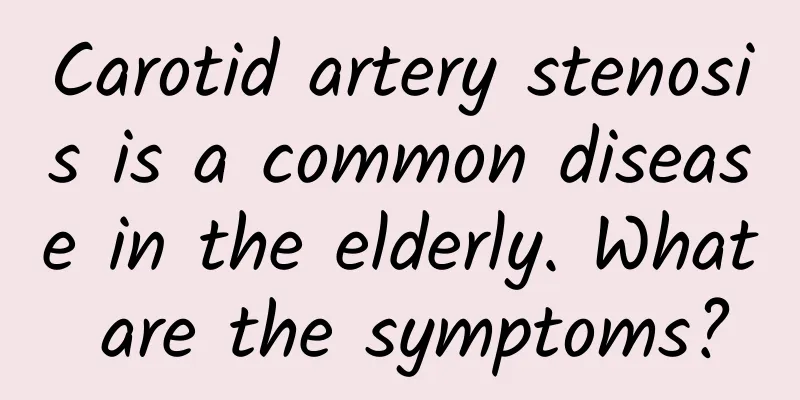Carotid artery stenosis is a common disease in the elderly. What are the symptoms?

|
A patient asked in a private message. The patient is a 62-year-old male. During a physical examination this year, he found that the stenosis rate of his left carotid artery was over 70%. The doctor recommended surgery. The patient was confused. Carotid artery stenosis should have symptoms. Normally, he does not have obvious clinical symptoms such as headaches and dizziness, and he is in good health. What is going on? There are blood supply arteries on both sides of the human neck. If one side of the blood vessels is narrowed, the other side of the blood vessels is in good condition, and the brain is well supplied with blood, the patient will not have obvious clinical symptoms. Generally speaking, symptoms will only appear when the patient's brain is not supplied with enough blood and the brain is ischemic and hypoxic. There are three symptoms of carotid artery stenosis: 1. Transient ischemic attack: patients experience headache, dizziness, transient blackouts, aphasia, limb numbness and other symptoms. These symptoms are generally mild and will not cause substantial harm to the patient. Moreover, these symptoms last for a short time, no longer than 24 hours, usually a few minutes or even a few seconds. Because transient ischemic attacks last for a short time and the symptoms are mild, they are often easily ignored. 2. Cerebral infarction: Patients may have symptoms such as crooked mouth, hemiplegia, aphasia, and coma. The FAST principle can be used to determine whether a patient has cerebral infarction: F refers to the face, and observe whether the patient has symptoms of crooked mouth; A refers to the arm, and the patient is asked to raise both arms horizontally to observe whether there is weakness in one side of the limbs; S refers to language, and the patient is asked to say a simple sentence, such as "It's a great day today", and observe whether the patient has slurred speech; T refers to time. When the patient has the above three symptoms, it is recommended to call 120 emergency number immediately and send to the hospital in time. Rescuing patients with cerebral infarction during the golden time can reduce the disability rate and mortality rate of patients. 3. Other ischemic symptoms: blindness, positional vertigo, blurred thinking, etc. The elderly are a high-risk group for carotid artery stenosis. Regardless of whether they have symptoms or not, it is recommended that this group of people have a color ultrasound of the neck during the physical examination to rule out neck diseases and reduce the risk of stroke. |
<<: What is the nutritional value of roast duck? Why does eating roast duck make you fat?
Recommend
Can women drink coffee during menstruation?
People who love drinking coffee can't help bu...
Can I eat mung bean porridge during dysmenorrhea?
Dysmenorrhea is too painful, and many girls can&#...
What problems can a gynecological examination reveal?
Gynecological examination is very important for f...
Can I eat ice cream during my period?
You cannot eat ice cream during menstruation, mai...
How to relieve swollen feet during pregnancy
Women will experience some pregnancy reactions du...
How to negotiate the price with the salesperson when buying a car for the first time? When is the best time to buy a car?
Many friends feel overwhelmed when buying a car f...
Can cervical insufficiency be restored?
Cervical insufficiency is also known as cervical ...
What is the yellow stuff coming out from below?
The yellow substance that flows out from below is...
Dull pain in left genital area
Gynecological inflammation is very common in our ...
Which type of swimming crab is better? Is it better to steam or boil the swimming crab?
If you have been craving for it recently, buy a f...
What foods should I eat if my endometrium is thin?
Women with thin endometrium must pay attention to...
What are the prenatal checkups that pregnant mothers must do?
Prenatal examination is an important measure to e...
Will the amount of vaginal discharge increase during the safe period?
There are a lot of secretions in a woman's va...
Brown discharge at 39 weeks
When brown discharge appears during the 39th week...
X-rays can harm pregnant women
Some young couples who are preparing to have a ba...









